
Menu:
2020 Scenario
The generation of the demand profiles for the 2020 scenario were based on literature reviews and government policies which aim to reduce demand by increasing the efficiency of electrical appliances and increasing insulation levels of buildings [1,2,3].
The following assumptions where made for the creation of the 2020 scenario:
- It is assumed that from 2012 to 2020, 10% more of the community people will work at home
- The thermal demand, according to government statistics, would be reduced by ~20 % due to improvements in insulation for buildings.
- Misc includes: Microwaves, hi-fis, kettles, hairdryers, toasters, irons, vacuum cleaners, tumble dryers, printers…
- Some of the appliances efficiency improvements are shown in the table shown below [4].
Profiles:
Winter profile:
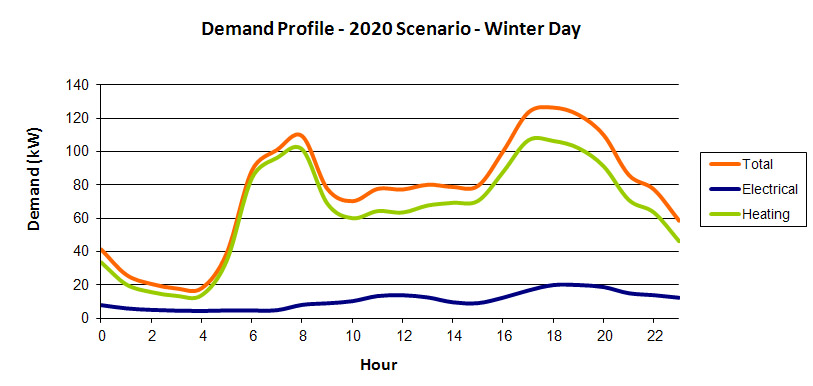
Winter electrical appliances breakown:
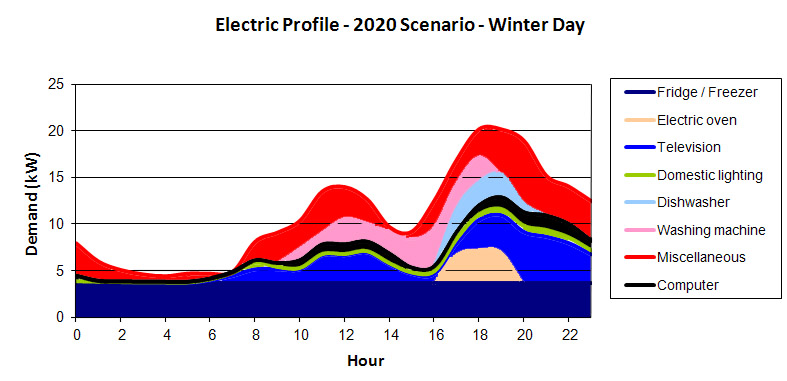
Summer profile:
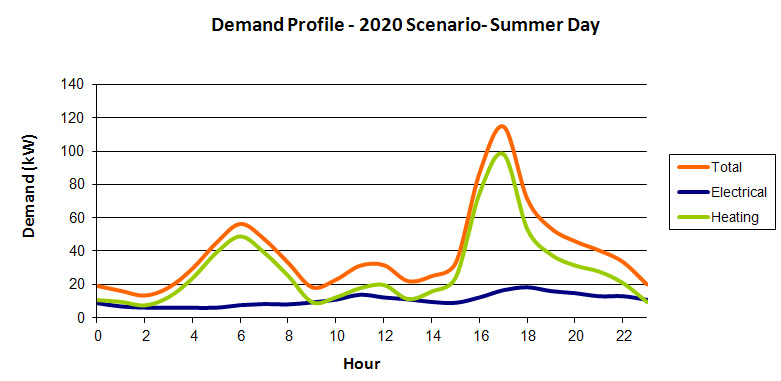
Summer electrical appliances breakown:
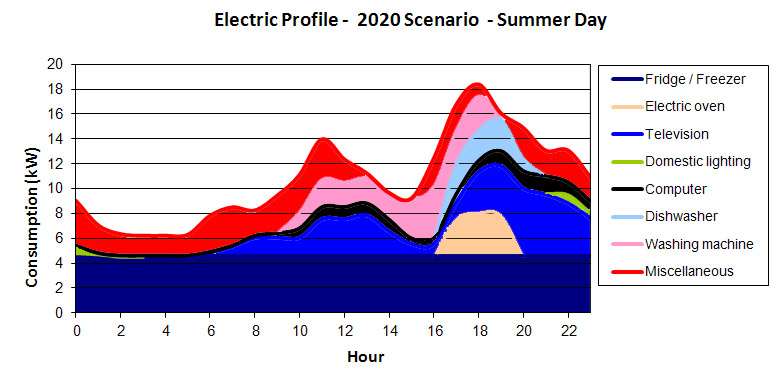
The table below shows typical examples of electrical appliance-efficiencies for 2020 [4]:
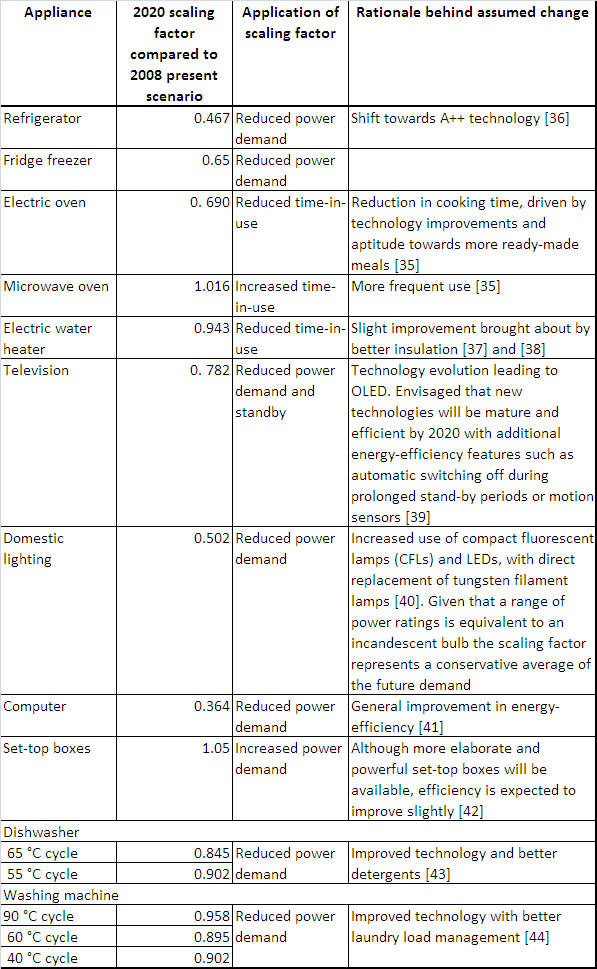
References
[1] Department of Energy and Climate Change, Lighting and Appliances. Accessible at: http://2050-calculator-tool.decc.gov.uk/assets/onepage/44.pdf (Accessed 10/3/12).
[2] Environmental Change Institute, Lighting and Appliances. Accessible at: http://www.eci.ox.ac.uk/research/energy/downloads/40house/chapter06.pdf (Accessed 10/3/12).
[3] Chwieduk, D. (2003). Towards sustainable-energy buildings. Applied Energy, 76, p211-217
[4] Borg, S. P. & Kelly, N. J. (2011). The effect of appliance energy efficiency improvements on domestic electric loads in European households. Energy and Buildings, 43, p2240-2250.